Chasing Storms At 17,500mph
Chasing Storms at 17,500mph
Flying 250 miles above the Earth aboard the International Space Station has given me the unique vantage point from which to view our planet. Spending a year in space has given me the unique opportunity to see a wide range of spectacular storm systems in space and on Earth.
The recent blizzard was remarkably visible from space. I took several photos of the first big storm system on Earth of year 2016 as it moved across the East Coast, Chicago and Washington D.C. Since my time here on the space station began in March 2015, I’ve been able to capture an array of storms on Earth and in space, ranging from hurricanes and dust storms to solar storms and most recently a rare thunder snowstorm.

Blizzard 2016

Hurricane Patricia 2015

Hurricane Joaquin 2015

Dust Storm in the Red Sea 2015

Dust Storm of Gobi Desert 2015

Aurora Solar Storm 2015

Aurora Solar Storm 2016

Thunderstorm over Italy 2015

Lightning and Aurora 2016

Rare Thunder Snowstorm 2016
Follow my Year In Space on Twitter, Facebook and Instagram.
More Posts from Bigbluenasa and Others
Incoming! We’ve Got Science from Jupiter!
Our Juno spacecraft has just released some exciting new science from its first close flyby of Jupiter!

In case you don’t know, the Juno spacecraft entered orbit around the gas giant on July 4, 2016…about a year ago. Since then, it has been collecting data and images from this unique vantage point.

Juno is in a polar orbit around Jupiter, which means that the majority of each orbit is spent well away from the gas giant. But once every 53 days its trajectory approaches Jupiter from above its north pole, where it begins a close two-hour transit flying north to south with its eight science instruments collecting data and its JunoCam camera snapping pictures.

Space Fact: The download of six megabytes of data collected during the two-hour transit can take one-and-a-half days!

Juno and her cloud-piercing science instruments are helping us get a better understanding of the processes happening on Jupiter. These new results portray the planet as a complex, gigantic, turbulent world that we still need to study and unravel its mysteries.
So what did this first science flyby tell us? Let’s break it down…
1. Tumultuous Cyclones

Juno’s imager, JunoCam, has showed us that both of Jupiter’s poles are covered in tumultuous cyclones and anticyclone storms, densely clustered and rubbing together. Some of these storms as large as Earth!

These storms are still puzzling. We’re still not exactly sure how they formed or how they interact with each other. Future close flybys will help us better understand these mysterious cyclones.

Seen above, waves of clouds (at 37.8 degrees latitude) dominate this three-dimensional Jovian cloudscape. JunoCam obtained this enhanced-color picture on May 19, 2017, at 5:50 UTC from an altitude of 5,500 miles (8,900 kilometers). Details as small as 4 miles (6 kilometers) across can be identified in this image.

An even closer view of the same image shows small bright high clouds that are about 16 miles (25 kilometers) across and in some areas appear to form “squall lines” (a narrow band of high winds and storms associated with a cold front). On Jupiter, clouds this high are almost certainly comprised of water and/or ammonia ice.
2. Jupiter’s Atmosphere
Juno’s Microwave Radiometer is an instrument that samples the thermal microwave radiation from Jupiter’s atmosphere from the tops of the ammonia clouds to deep within its atmosphere.

Data from this instrument suggest that the ammonia is quite variable and continues to increase as far down as we can see with MWR, which is a few hundred kilometers. In the cut-out image below, orange signifies high ammonia abundance and blue signifies low ammonia abundance. Jupiter appears to have a band around its equator high in ammonia abundance, with a column shown in orange.

Why does this ammonia matter? Well, ammonia is a good tracer of other relatively rare gases and fluids in the atmosphere…like water. Understanding the relative abundances of these materials helps us have a better idea of how and when Jupiter formed in the early solar system.
This instrument has also given us more information about Jupiter’s iconic belts and zones. Data suggest that the belt near Jupiter’s equator penetrates all the way down, while the belts and zones at other latitudes seem to evolve to other structures.
3. Stronger-Than-Expected Magnetic Field

Prior to Juno, it was known that Jupiter had the most intense magnetic field in the solar system…but measurements from Juno’s magnetometer investigation (MAG) indicate that the gas giant’s magnetic field is even stronger than models expected, and more irregular in shape.

At 7.766 Gauss, it is about 10 times stronger than the strongest magnetic field found on Earth! What is Gauss? Magnetic field strengths are measured in units called Gauss or Teslas. A magnetic field with a strength of 10,000 Gauss also has a strength of 1 Tesla.

Juno is giving us a unique view of the magnetic field close to Jupiter that we’ve never had before. For example, data from the spacecraft (displayed in the graphic above) suggests that the planet’s magnetic field is “lumpy”, meaning its stronger in some places and weaker in others. This uneven distribution suggests that the field might be generated by dynamo action (where the motion of electrically conducting fluid creates a self-sustaining magnetic field) closer to the surface, above the layer of metallic hydrogen. Juno’s orbital track is illustrated with the black curve.
4. Sounds of Jupiter
Juno also observed plasma wave signals from Jupiter’s ionosphere. This movie shows results from Juno’s radio wave detector that were recorded while it passed close to Jupiter. Waves in the plasma (the charged gas) in the upper atmosphere of Jupiter have different frequencies that depend on the types of ions present, and their densities.
Mapping out these ions in the jovian system helps us understand how the upper atmosphere works including the aurora. Beyond the visual representation of the data, the data have been made into sounds where the frequencies and playback speed have been shifted to be audible to human ears.
5. Jovian “Southern Lights”

The complexity and richness of Jupiter’s “southern lights” (also known as auroras) are on display in this animation of false-color maps from our Juno spacecraft. Auroras result when energetic electrons from the magnetosphere crash into the molecular hydrogen in the Jovian upper atmosphere. The data for this animation were obtained by Juno’s Ultraviolet Spectrograph.

During Juno’s next flyby on July 11, the spacecraft will fly directly over one of the most iconic features in the entire solar system – one that every school kid knows – Jupiter’s Great Red Spot! If anybody is going to get to the bottom of what is going on below those mammoth swirling crimson cloud tops, it’s Juno.

Stay updated on all things Juno and Jupiter by following along on social media: Twitter | Facebook | YouTube | Tumblr
Learn more about the Juno spacecraft and its mission at Jupiter HERE.

NASA Gemini Mission Spacewalk. Famous shot. Note the hand held maneuvering gun
Solar System: Things to Know This Week
From observing our moon to Saturn’s mini solar system …here are a few things you should know about our solar system this week:
1. What a Long, Strange—and Revealing—Trip It’s Been

As the Cassini mission builds toward its climactic “Grand Finale,” we’re taking a look back at the epic story of its journey among Saturn’s mini-solar system of rings and moons.
+ Traverse the timeline
2. Our Very Own Moon

Unlike Saturn, Earth has only one moon. Let’s celebrate it! International Observe the Moon Night (InOMN) is a worldwide, public celebration of lunar science and exploration held annually. On Oct. 8, everyone on Earth is invited to observe and learn about the moon together, and to celebrate the cultural and personal connections we all have with it.
+ Join in
3. What’s Up, October?

Even more about Earth’s moon is the subject of this month’s video guide for sky watchers and includes a look at the moon’s phases and when to observe them. Also featured are a guide to upcoming meteor showers and tips on how to catch a glimpse of Saturn.
+ Take a look
4. Nine Lives

Dawn’s discoveries continue, even as the asteroid belt mission marks nine years in space. “For such an overachiever,” writes Dawn’s top scientist, “it’s fitting that now, on its ninth anniversary, the spacecraft is engaged in activities entirely unimagined on its eighth.”
+ Learn more
5. The Incredible Shrinking Mercury

It’s small, it’s hot, and it’s shrinking. Research funded by us suggests that Mercury is contracting even today. This means we now know that Mercury joins Earth as a tectonically active planet.
+ Get the small details
Discover the full list of 10 things to know about our solar system this week HERE.
Make sure to follow us on Tumblr for your regular dose of space: http://nasa.tumblr.com

The Andromeda Galaxy is 2 million light years away from us so what we see now is how it appeared 2 million years ago. It will collide with our Milky Way in 2 billions years from now. The two galaxies are heading towards each other at a rate of 430 km/hr. A billion years from now Andromeda will loom as a spectacular site, eventually swelling to fill half of the night sky.
(via https://www.youtube.com/watch?v=QMs7sWGm9q0)
Just another great training with educators using NASA Education resources for the classroom.
2017 - Johnson Space Center Year in Review
A 3D tour of the path taken by Mark Watney in “The Martian” was recently added to the Mars Trek page. It includes commentary from NASA experts. Use the tutorial to learn how to navigate. @NASAEPDC
What’s Up for April 2016?
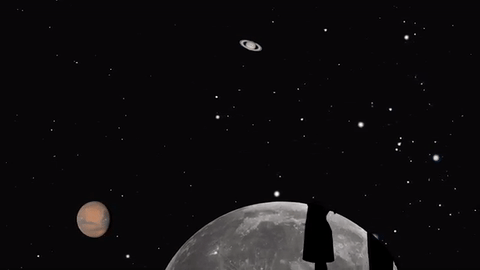
Jupiter, Mars, the Lyrid meteor shower and 2016’s best views of Mercury are all visible in the sky this month.
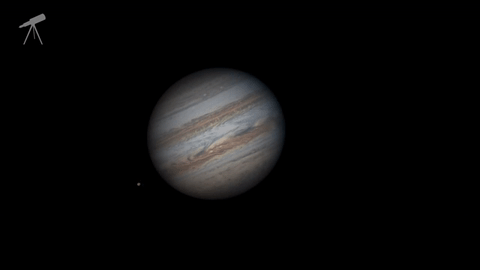
Jupiter, where our Juno mission will begin orbiting on July 4, continues to shine almost as brightly this month as last. And eagle-eyed telescope viewers will see a transit, a shadow transit, an occultation and an eclipse of Jupiter’s moons- all in one night: April 6-7.
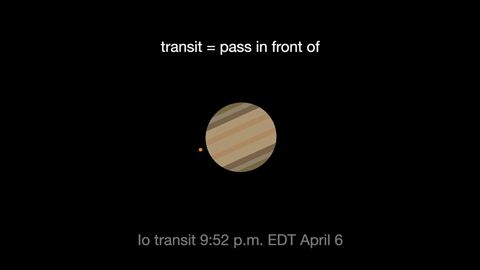
Io transits first, crossing the planet beginning at 9:52 p.m. EDT. It’s shadow can be seen less than an hour later.
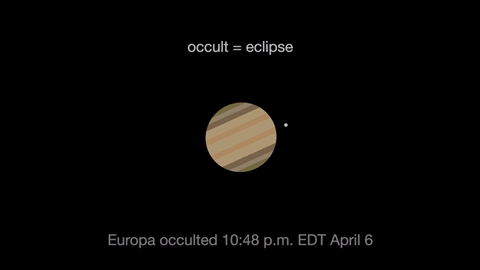
Next Jupiter occults, or eclipses, Europa as Europa slips behind the giant planet at 10:48 p.m. EDT. At 3 a.m. Europa reappears from its eclipse, dramatically leaving the shadow of Jupiter.
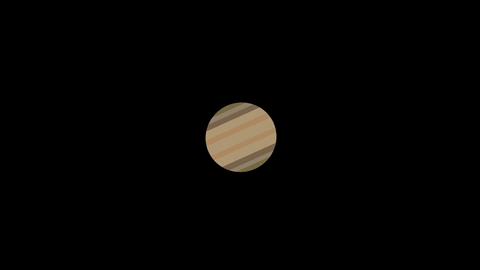
Ganymede transits the planet beginning at 1:01 EDT April 7.
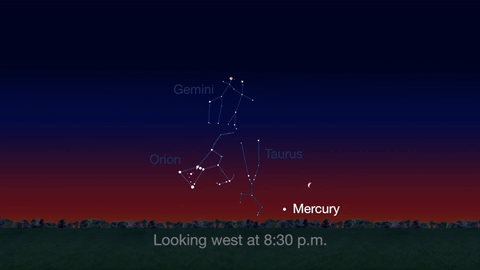
Check out the other planets in April, too! Mercury is always a challenging object to view, but this month you can spot it after sunset about 10 degrees above the horizon. Through a telescope you can see its phase. It will appear like a tiny crescent moon, with about 1/3 of its disk illuminated.
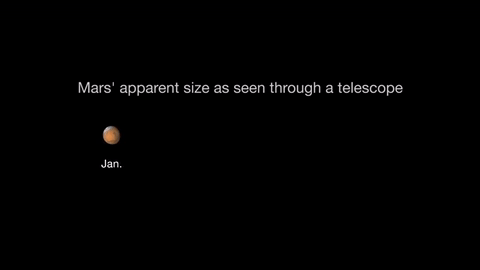
Mars is finally visible before midnight this month. It rises in the southeast at about 10 p.m. by the end of April. The best observing of Mars will be when it is highest in the sky. This means a few hours before dawn. Its brightness and apparent size increase dramatically this month. By month’s end, Mars appears nearly twice as bright as at the beginning of the month.
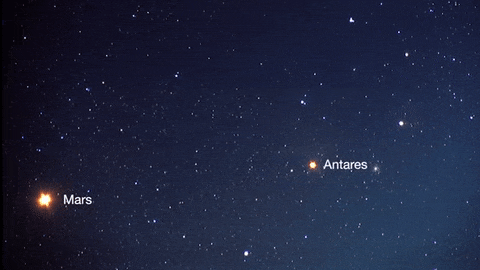
About mid-month you’ll see Mars near its rival in the sky: the similar-colored red supergiant star Antares. The name “Antares” means “equal to or rival of Mars”.
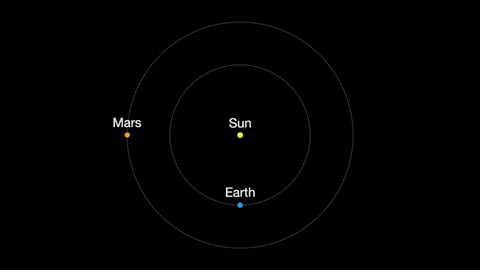
Earth moves almost twice as fast as Mars does, so it often passes Mars in their race around the sun. This causes “retrograde motion”: an illusion we see from our viewpoint on Earth.
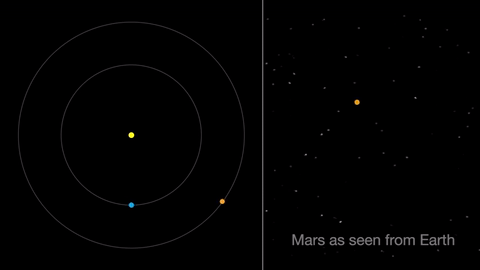
Retrograde motion happens as Earth catches up to Mars, causing Mars to appear slow to slow its eastward motion against the stars. After a few days, when Earth has overtaken Mars, the Red Planet seems to move westward. Eventually, Earth moves far enough around its orbit that Mars appears to be moving eastward again.
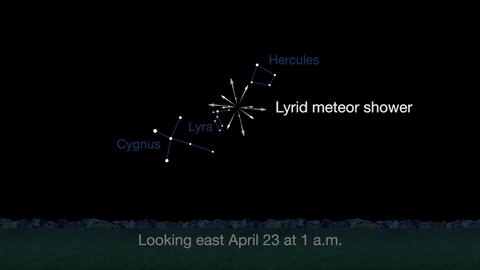
April features one meteor shower, the Lyrids. This year the Lyrids are marred by the full moon. The best time to view will be just before dawn on April 23, when the constellation Lyra is overhead and the moon will be near to setting.
With all of these great things to spot in the sky this month, be sure to get outside and look up!
Make sure to follow us on Tumblr for your regular dose of space: http://nasa.tumblr.com

M8 M16 M17 And M20 Gems Of The Summer Milky Way by Martin Campbell on Flickr.
-
 model2watch liked this · 3 weeks ago
model2watch liked this · 3 weeks ago -
 hvndrixx liked this · 6 months ago
hvndrixx liked this · 6 months ago -
 annita89qav7a9uh liked this · 6 months ago
annita89qav7a9uh liked this · 6 months ago -
 xx-star27-xx-blog liked this · 10 months ago
xx-star27-xx-blog liked this · 10 months ago -
 leda-timeandspace liked this · 1 year ago
leda-timeandspace liked this · 1 year ago -
 emptystage liked this · 1 year ago
emptystage liked this · 1 year ago -
 cosmic-kiwi reblogged this · 1 year ago
cosmic-kiwi reblogged this · 1 year ago -
 pardon-my-obsessive-tendencies reblogged this · 1 year ago
pardon-my-obsessive-tendencies reblogged this · 1 year ago -
 julieblog2424 liked this · 1 year ago
julieblog2424 liked this · 1 year ago -
 comthickspotchegoog liked this · 1 year ago
comthickspotchegoog liked this · 1 year ago -
 rissamarabbalt liked this · 1 year ago
rissamarabbalt liked this · 1 year ago -
 meoraditegent liked this · 1 year ago
meoraditegent liked this · 1 year ago -
 enstarsenpali liked this · 1 year ago
enstarsenpali liked this · 1 year ago -
 error-error-error-error reblogged this · 1 year ago
error-error-error-error reblogged this · 1 year ago -
 dreaming-of-brent liked this · 1 year ago
dreaming-of-brent liked this · 1 year ago